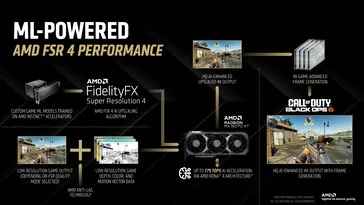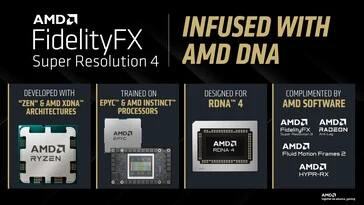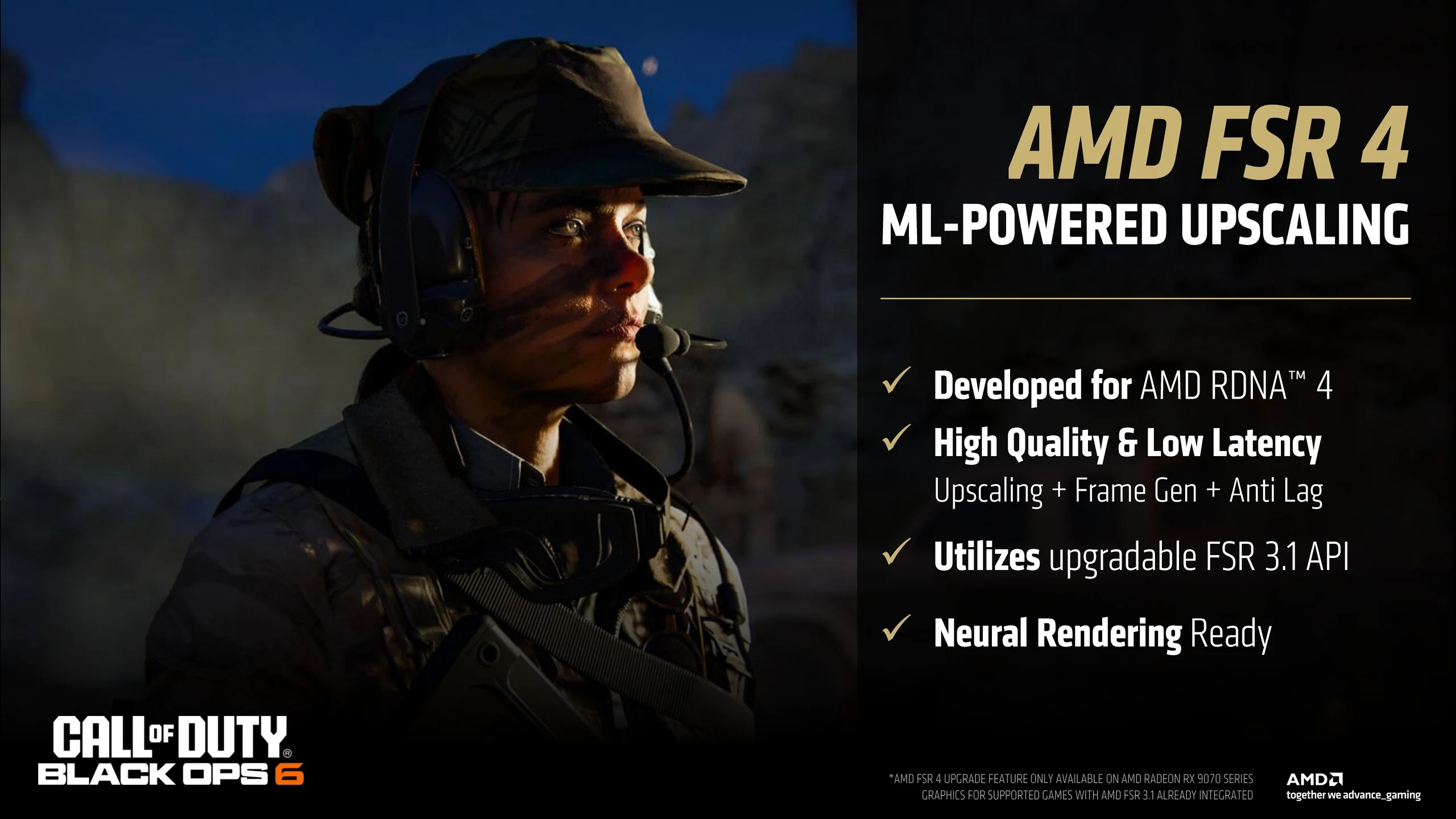Key Takeaways
1. FSR 4 Transition: AMD’s FidelityFX Super Resolution (FSR) 4 moves to a fully machine learning-based approach, enhancing upscaling calculations and frame generation using dedicated FP8 units in RDNA 4 architecture.
2. Architectural Advancements: RDNA 4 features second-generation AI accelerators that optimize FSR 4, distinguishing it from older Radeon cards which may not support this technology immediately.
3. Performance Boost: FSR 4, along with updated features like Anti-Lag 2 and Radeon Super Resolution, is expected to deliver up to a 3.7x FPS boost at 4K with ray tracing enabled through the Hypr-RX functionality.
4. Game Support: At launch, FSR 4 will support 30 games, with plans for over 75 additional titles to adopt the technology by 2025.
5. Adrenalin Software Enhancements: Radeon Software Adrenalin Edition 25.3.1 introduces AI-driven features such as Radeon Image Sharpening 2, AMD Chat, and Image Inspector, providing a comprehensive suite of utilities for improved user experience and performance.
Along with revealing performance figures and explaining the RDNA 4 architecture in the newly launched Radeon RX 9070 XT and RX 9070 graphics cards, AMD is providing insight into its upcoming upscaling technology stack, led by FidelityFX Super Resolution (FSR) 4.
FSR Evolution
Up to now, FSR versions, including 3.1, primarily focused on upscaling calculations, utilizing machine learning mainly for generating fluid motion frames (FMF). However, with FSR 4, AMD is transitioning to a fully machine learning-based approach. This process begins with training game models on Instinct GPUs and utilizes dedicated FP8 units on the new RDNA 4 cards for final rendering, frame generation, and Radeon Anti-Lag.
Similarities with Nvidia
Nvidia has moved to a transformer model with DLSS 4, which arguably provides better visuals than the earlier conventional neural network (CNN) used in previous versions. AMD is also making similar advancements with FSR 4. The company states that FSR 4 takes advantage of the FP8 capabilities of RDNA 4’s second-generation AI accelerators. This means that older Radeon cards will not benefit from this tech, at least for the time being. While there is potential for backporting FSR 4 or its elements to older models, it’s prudent to not count on that just yet.
DLSS vs. FSR
On the flip side, DLSS 4 can be utilized by RTX GPUs dating back to the Turing generation, although the multi-frame generation feature is confined to the RTX 50 series Blackwell cards. FSR 4 employs a proprietary model that combines the strengths of CNN and transformer architectures, as claimed by AMD.
With updates to AFMF bringing it to version 2.1, alongside Anti-Lag 2, Radeon Boost, and Radeon Super Resolution — all grouped under the Hypr-RX banner — FSR 4 is expected to provide up to a 3.7x FPS boost at 4K with ray tracing activated. Essentially, Hypr-RX allows users to activate all these features in a game with just one click in the Adrenalin driver.
Game Support and Software
At launch, AMD assures FSR 4 will support 30 games, with over 75 more expected to adopt this technology through 2025. The RDNA 4 cards will come equipped with Radeon Software Adrenalin Edition 25.3.1, which introduces several handy AI-driven features while keeping a familiar user interface.
The new Adrenalin version includes Radeon Image Sharpening 2, which provides system-wide image sharpening without relying on any external API. It also supports up to 8K 75 FPS video codec acceleration and hardware flip metering, leveraging updates to RDNA 4’s media engine.
Additional Utilities
AMD is including several utilities with Adrenalin 25.3.1, such as AMD Chat, Image Inspector, and AI Apps Manager. AMD Chat is akin to Nvidia’s Chat RTX and functions locally as an LLM, allowing users to chat about GPU-specific questions. It can also assist with local image generation, but users should be ready to allocate 25 GB of disk space for this feature.
The AI Apps Manager categorizes AI-accelerated applications separately from the rest of your game library. Meanwhile, AMD Image Inspector enables users to capture rendering errors and report them directly to AMD as part of the AMD User Experience program, which is completely optional. It may introduce a slight performance overhead during gaming, but actual performance will be confirmed when we have a chance to test it ourselves.
AMD Chat and Image Inspector can be customized through the new AMD Install Manager, which also helps ensure that your AMD chipset drivers are up to date. Furthermore, AMD’s ROCm software stack is expected to receive some advancements tailored for RDNA 4, although details on that will be shared at a later date.




Leave a Reply